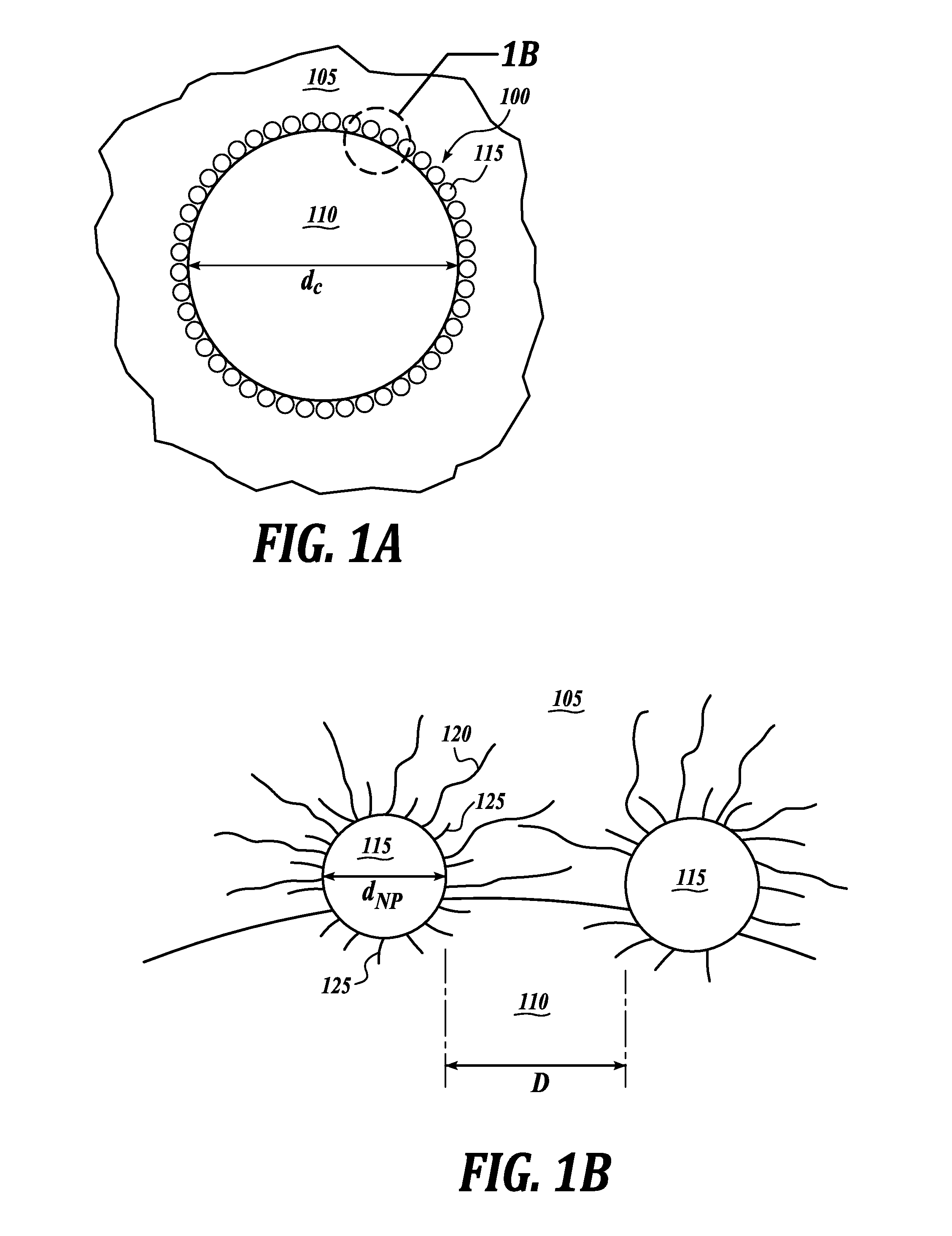Nanoparticle emulsions
a technology of nanoparticles and emulsions, which is applied in the field of nanoparticle emulsions, can solve the problems of high cost, high labor intensity and labor intensity of the process required for synthesizing tethered nanoparticles, and the inability to stabilize emulsions, etc., and achieves the effect of effectively stabilizing oil-water emulsions, high emulsions, and high emulsions
- Summary
- Abstract
- Description
- Claims
- Application Information
AI Technical Summary
Benefits of technology
Problems solved by technology
Method used
Image
Examples
example 1
Amphiphilic Gold Nanoparticle Composites
[0108]Amphiphilic gold nanoparticles are demonstrated to effectively stabilize emulsions of hexadecane in water. Nanoparticle surfactants are synthesized using a simple and scalable one-pot method that involves the sequential functionalization of particle surfaces with thiol-terminated polyethylene glycol (PEG) chains and short alkane-thiol molecules. The resulting nanoparticles are shown to be highly effective emulsifying agents due to their strong adsorption at oil-water and air-water interfaces. The original non-functionalized gold nanoparticles are unable to effectively stabilize oil-water emulsions due to their small size and low adsorption energy. Small angle x-ray scattering and electron microscopy are used to demonstrate the formation of nanoparticle-stabilized colloidosomes that are stable against coalescence and show significant shifts in plasmon resonance enhancing the near-infrared optical absorption.
INTRODUCTION
[0109]The high adso...
example 2
Simultaneous Ultrasound and Photoacoustic Analysis Using Nanoparticle Composites
[0126]The present example utilizes the composites of the disclosed nanoparticle composites as contrast agents for use with ultrasound (US) imaging, photoacoustic (PA) imaging, and combinations thereof (PA+US).
[0127]FIG. 8B shows an example of an experimental setup for stimulating and imaging the composite contrast agents of the present disclosure, including a tube containing the samples, a pulsed optical source, a linear array transducer for delivering US pulses, and a wideband PVDF (polyvinylidene fluoride) transducer to receive the acoustic signals.
[0128]The PTFE (Teflon) tube (SLTT-16-72, Zeus, WA) with an inner diameter of 1.6 mm and a thickness of 38 μm was positioned in a tank filled with DI water. The tube was filled with the samples to be tested.
[0129]The optical source was providing by a wavelength tunable OPO system (Surelite OPO plus, Continuum, Santa Clara, Calif.) pumped by a frequency-doubl...
PUM
| Property | Measurement | Unit |
|---|---|---|
| diameter | aaaaa | aaaaa |
| diameter | aaaaa | aaaaa |
| temperature | aaaaa | aaaaa |
Abstract
Description
Claims
Application Information
 Login to View More
Login to View More - R&D
- Intellectual Property
- Life Sciences
- Materials
- Tech Scout
- Unparalleled Data Quality
- Higher Quality Content
- 60% Fewer Hallucinations
Browse by: Latest US Patents, China's latest patents, Technical Efficacy Thesaurus, Application Domain, Technology Topic, Popular Technical Reports.
© 2025 PatSnap. All rights reserved.Legal|Privacy policy|Modern Slavery Act Transparency Statement|Sitemap|About US| Contact US: help@patsnap.com



